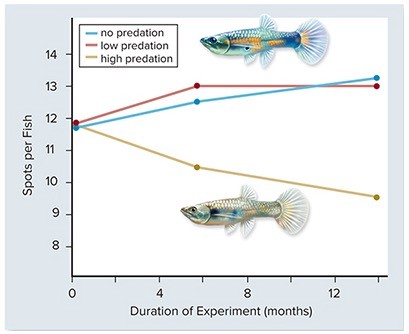An individual who has two different alleles for a trait is called ____________
A. Haploid
B. Homozygous
C. Heterozygous
D. Isozygous
E. True-breeding
C
You might also like to view...
What organelle and function pair best explains their ability to divide?
A. Chloroplasts and peroxisomes because they both have their own DNA. B. Mitochondria and chloroplasts due to their association with endosymbiosis theory. C. Ribosomes and mitochondria as each is a result of regression theory. D. Peroxisomes and lysosomes are both derived from engulfed bacteria.
Evergreen broadleaf trees, along with abundant rain, warm temperatures, and consistent day length characterize the
____ biome.
a. chaparral b. tropical rain forest
c. temperate deciduous forest d. temperate grassland e. boreal forest
The radioactive decay of 14C produces
a. carbon 12. b. carbon 13. c. more carbon 14. d. nitrogen 14. e. oxygen 14.
 In the experiment above, guppy color patterns (spots) were measured in populations exposed to increasing amounts of predation. From this you could conclude that ________.
In the experiment above, guppy color patterns (spots) were measured in populations exposed to increasing amounts of predation. From this you could conclude that ________.
A. predators are less likely to catch and eat brightly colored guppies B. predators do not affect the color patterns of guppies C. predators are more likely to catch and eat brightly colored guppies D. evolutionary changes take millions of years to appear E. brightly colored guppies are more likely to reproduce in the presence of predators